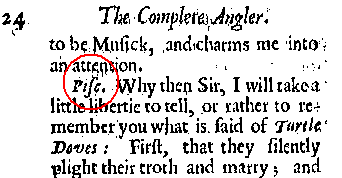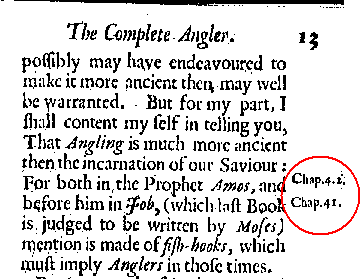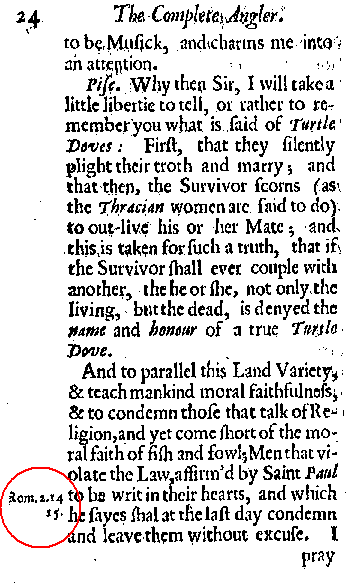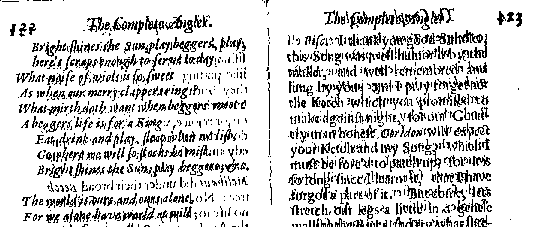The text has speaker names Piscator and Viator who are noted throughout the text. What is the treatment for speaker dialogue in a non-drama text?

Use drama tags (especially <SP> and <SPEAKER>) whenever the text is consistently dramatic in form and layout. This includes literary dialogs like The Compleat Angler, even though they are not "real" drama. So yes, I'd go ahead and capture the speaker names like this:
<SP>
<SPEAKER>Pisc.</SPEAKER>
<P>Why then Sir, I will take a little libertie ...
If there is no clear dramatic structure, or if it is hit-or-miss or breaks down after a while when the author forgets that he's writing a dialog, you can always use the simpler approach: just use <DIV>s or <P>s <LG>s as appropriate and include the speaker name within the main text, like this:
<P><HI>Pisc.</HI>Why then Sir, I will take a little libertie ...
But as I say, in *this* book, there seems to be enough consistency in the structure to use the more elaborate tagging, and that's what I would do.
In order to use speaker tags, should this text be labeled <sp> (speech)?
Yes. <SPEAKER> tags appear at the head of the speaker's <SP>eech.
There are ambiguous references in the margins (e.g. page 13). Should this margin text be treated as a milestone?

No. the numbers you refer to are abbreviated bibliographic citations (in this case, Biblical citations to Amos 4.2 and Job 41). I'd call these <NOTE>s; they should be treated the same as the fuller Biblical citation <NOTE>s that you ask about below.
The rule about milestones and notes is (quoting here from the keying instructions):
"[Use of <MILESTONE>] applies only to a *sequence*; occasional notes of this sort should be recorded simply as <NOTE>. If in doubt whether a set of numbers represents <MILESTONE>s or <NOTE>s, use <NOTE>."
Also, there are ambiguous biblical references in the margins (e.g. page 24). Since this margin-text breaks across more than one line, what clues or visual cues to use to associate that line text with a certain line? Where should we place this note in the text?

It is very hard to come up with rules that allow for the exact placement of notes like this. The general rule has to be "do the best you can"; but in this case the rule in the instructions actually works quite well (quoting the instructions again):
"A marginal note in a prose text that seems to apply vaguely to the material next to which it is placed should be inserted at the end of the nearest sentence (as marked by punctuation), or at some other break in the text if that seems more appropriate."
Applying this rule in the example you give would result in placing the note at the end of the nearest sentence, i.e. the sentence that ends "without excuse," or in tagging like this:
Men that vi|olate the Law, affirm'd by Saint <HI>Paul</HI> to be writ in their hearts, and which he sayes shal at the last day condemn and leave them without excuse. <NOTE PLACE="marg">Rom. 2.14 15</NOTE> I
What is the treatment for page level illegibility? (e.g. pages 122-123).

[REVISED ANSWER, 2/02] If the entire page is illegible, use $page$; if it partly illegible, capture what can be captured and leave the rest as $word$, $paragraph$ etc.